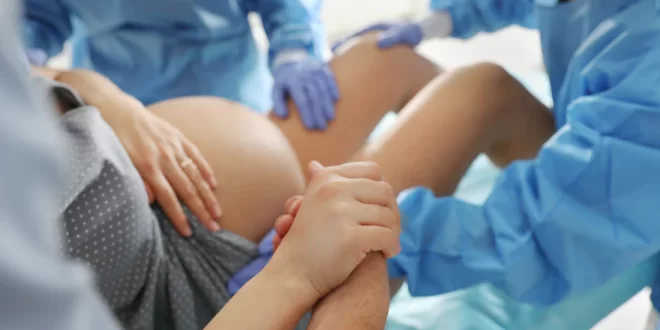Episiotomies were routinely administered during childbirth to labouring women by obstetricians until relatively recently. A routine episiotomy, however, is not recommended by WHO guidelines.
In this blog, we will study Episiotomy Procedure, Risks and Recovery.
Exactly what is an episiotomy?
An episiotomy is a surgical procedure used to widen the opening of the vagina so that the baby’s head can emerge more easily.
Procedure
Each type of Episiotomy has its procedure. In general, each type involves:
Anaesthetic:
If the patient consents during an episiotomy, the doctor will administer an anaesthetic first. It may not be necessary if someone already has an epidural. An injection of local anaesthetic will be given if the patient does not have an epidural.
Incision:
To make an incision, a doctor uses scissors or a scalpel. The posterior fork of the vaginal opening is where median and mediolateral episiotomies begin. Mediolateral episiotomies run right or left at a 45–60 degree angle towards the anus, while median episiotomies run downward.
Examination:
An examination of the vagina, cervix, and surrounding tissues will be conducted with a metal retractor after delivery. A rectal exam will be performed.
Stitches:
An injury to the rectum’s lining is closed with a thin suture. Sutures will be used for deeper anal sphincters. A doctor will then repair the incision itself shortly after childbirth. This will be done with surgical thread or stitches that absorb quickly into the body.
Risks
The procedure of Episiotomy may lead to many complications, including:
- Viruses
- The incision may cause large tears that may extend into the anus
- Blood collection in the perineal tissues as a result of bleeding and perineal hematoma
- Painful intercourse
- Pain in the perineum
Healing Care
Use tampons, have sex, and douching six weeks after your procedure to prevent your stitches from rupturing.
You can reduce incision pain by:
- Local anaesthetic sprays, ibuprofen, and medicated creams can relieve pain
- Take a warm, clean bath after giving birth (wait 24 hours)
- After delivery, apply ice packs
Final words
This blog gives all the info about Episiotomy that you must know. Dr Ramandeep is one of the top gynaecologists in Chandigarh, where you can find all of your answers to your queries. Contact them now.
 Ek Dum Desi – Your Desi Fitness Tips Buddy Find all desi tried and tested by millions fitness tips here.
Ek Dum Desi – Your Desi Fitness Tips Buddy Find all desi tried and tested by millions fitness tips here.




